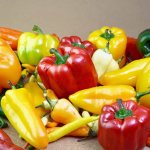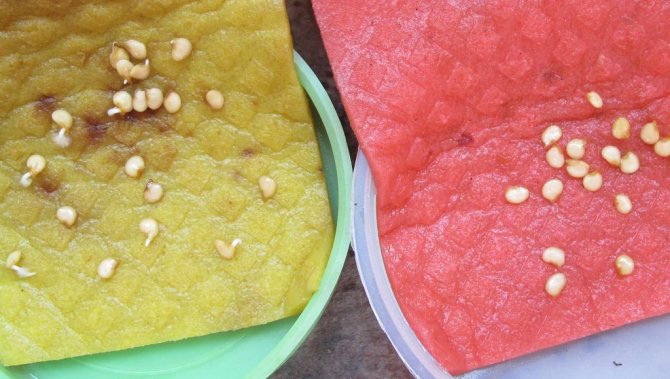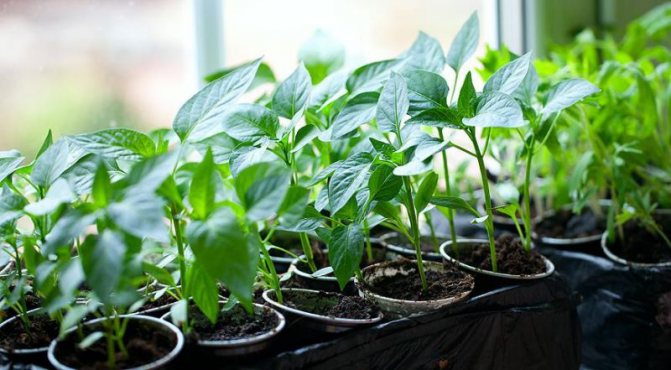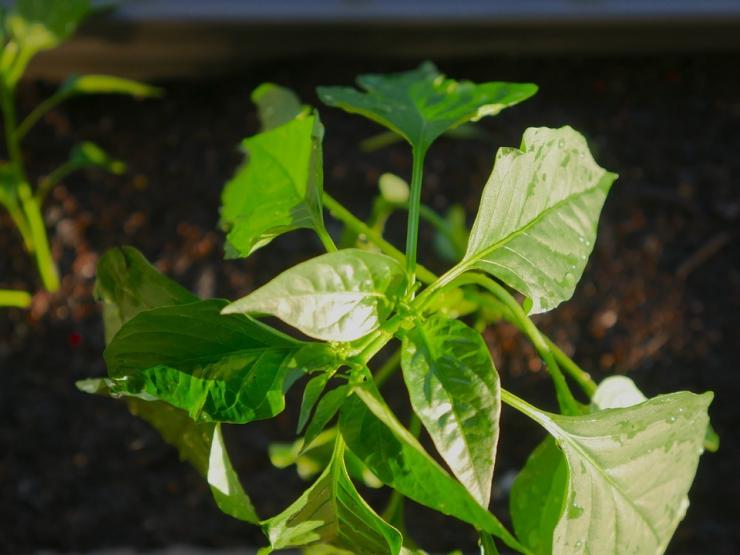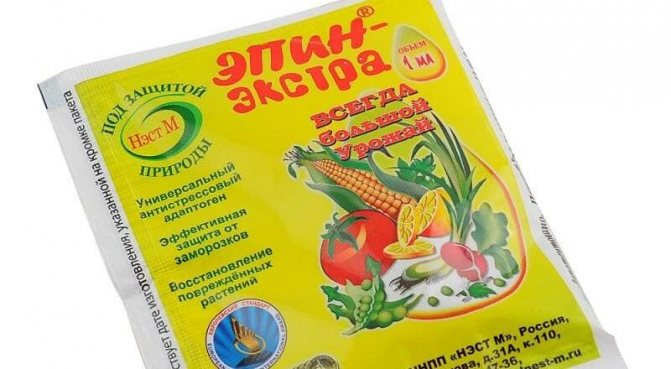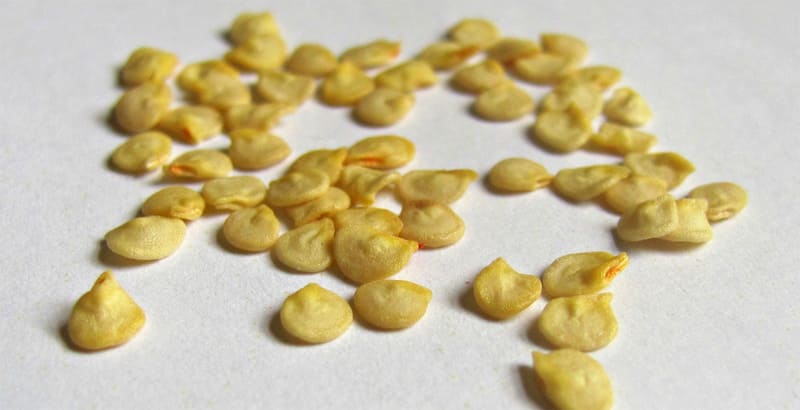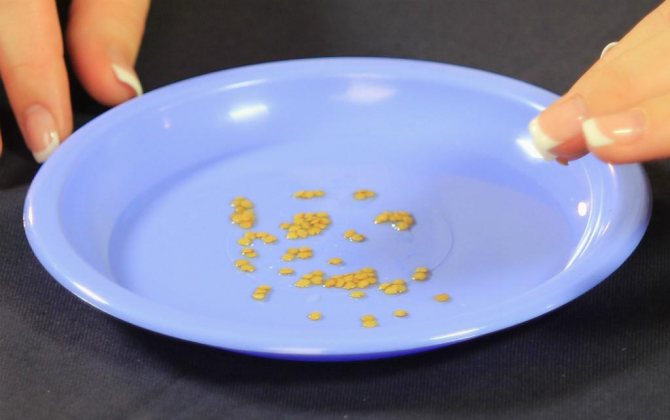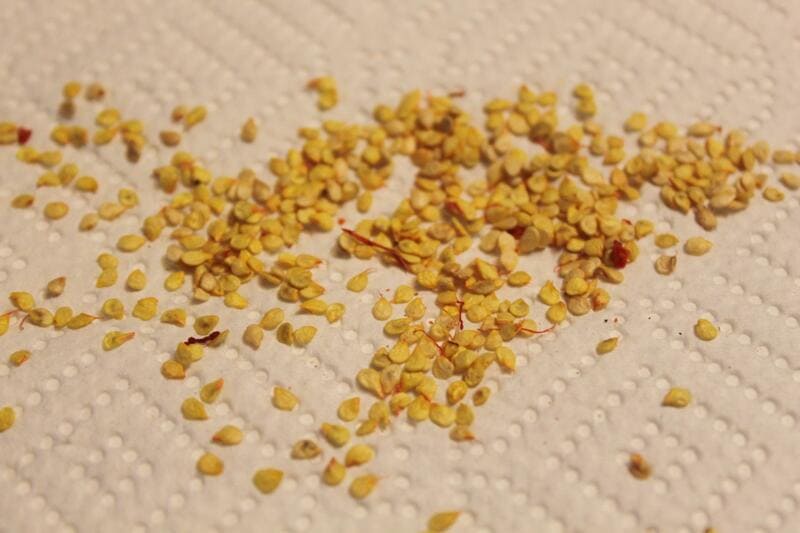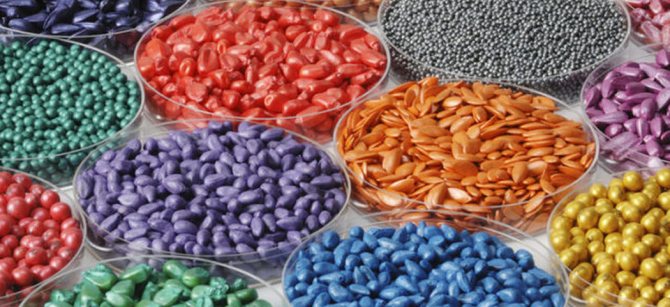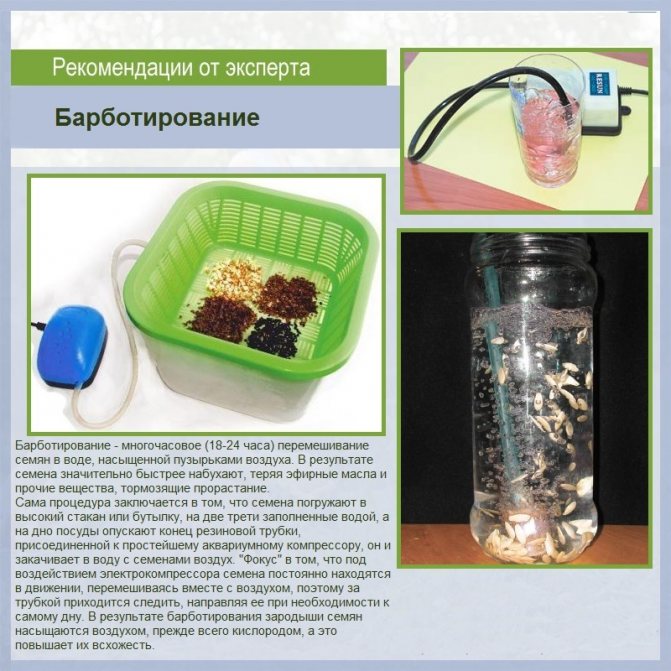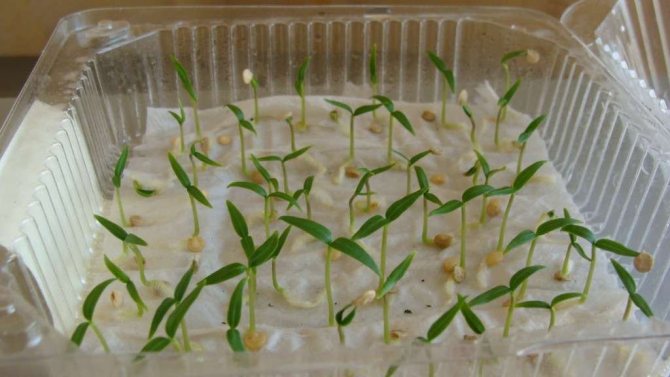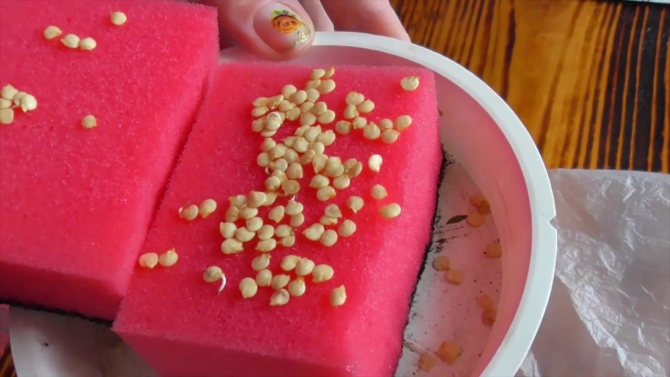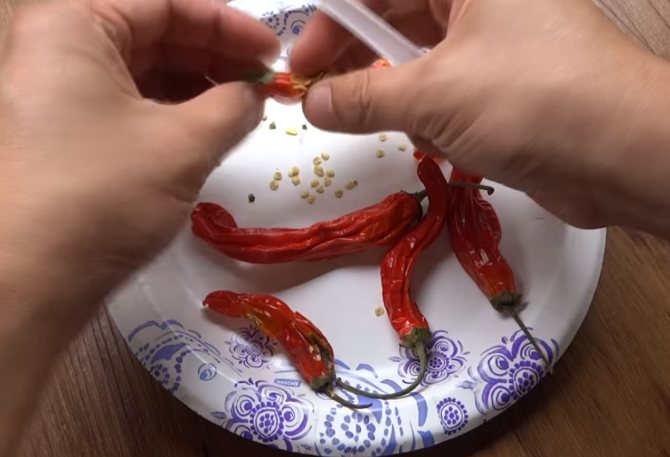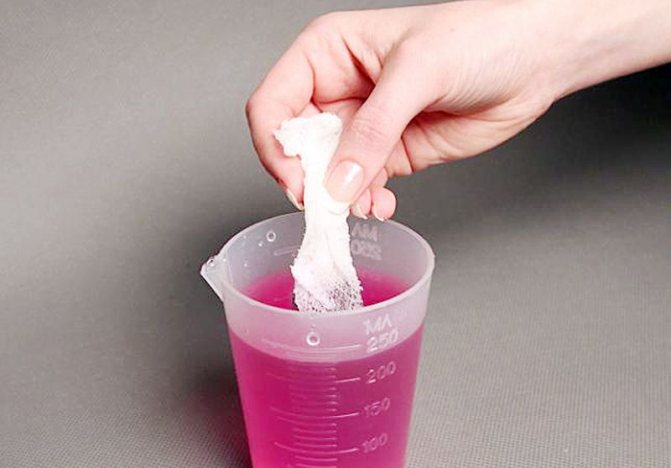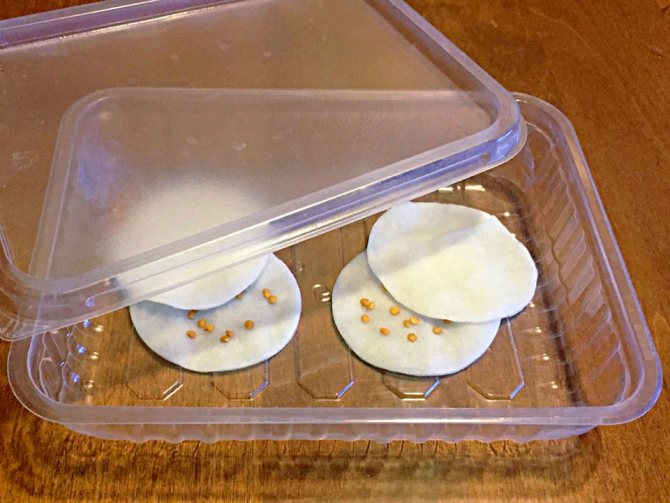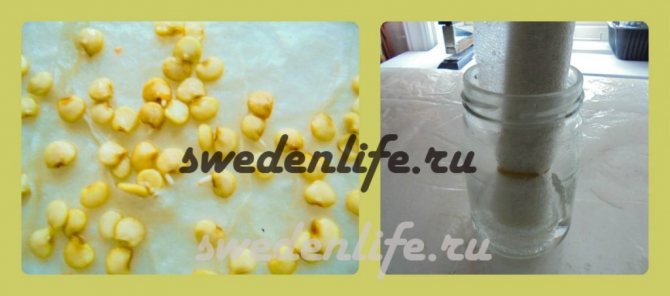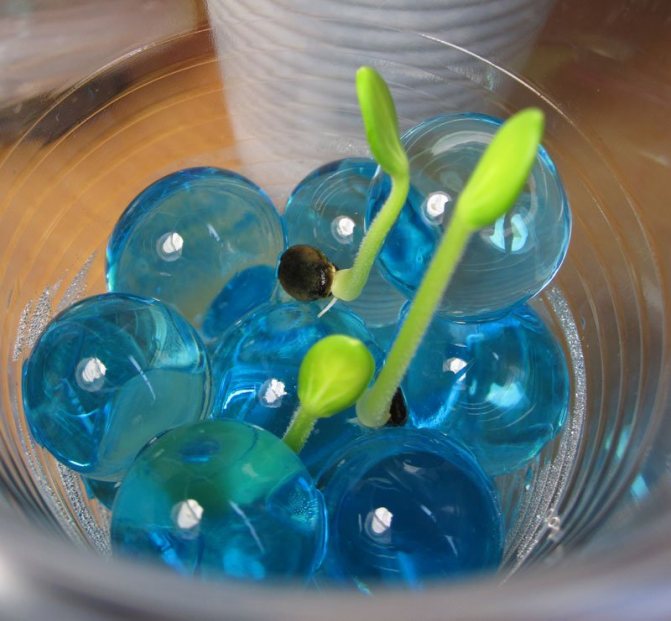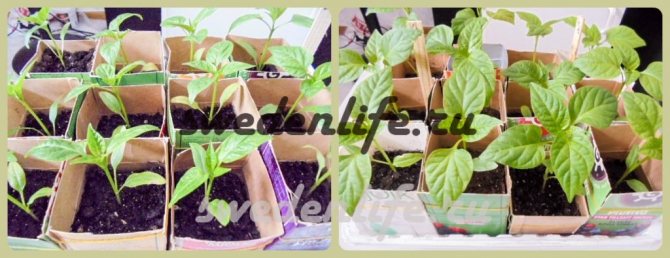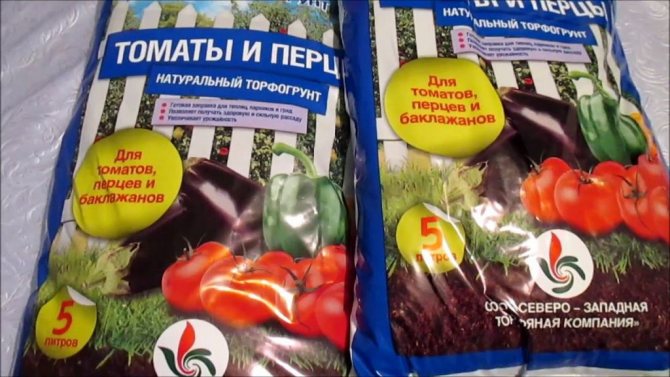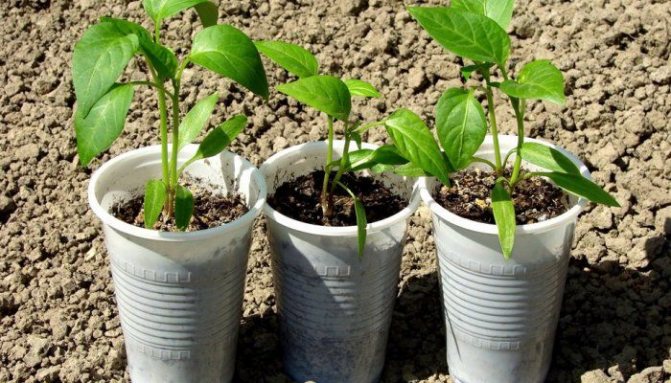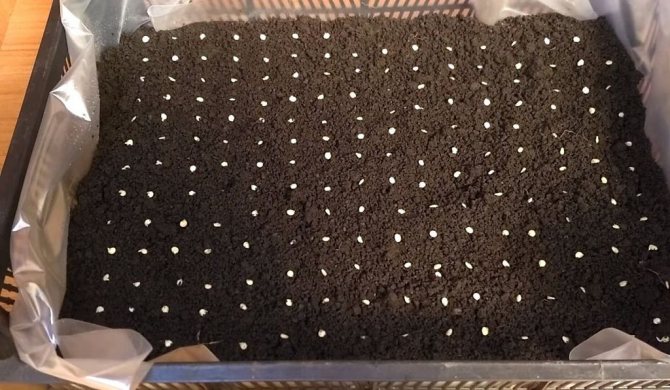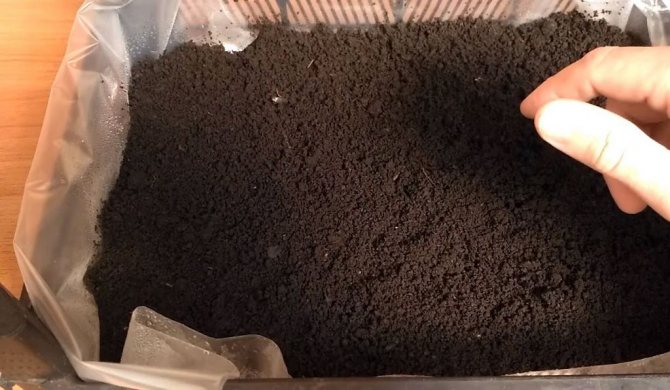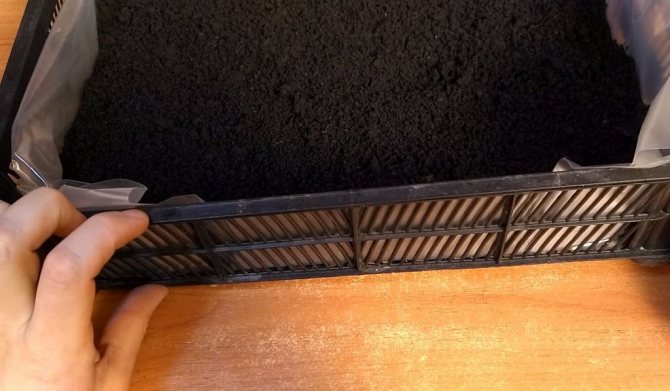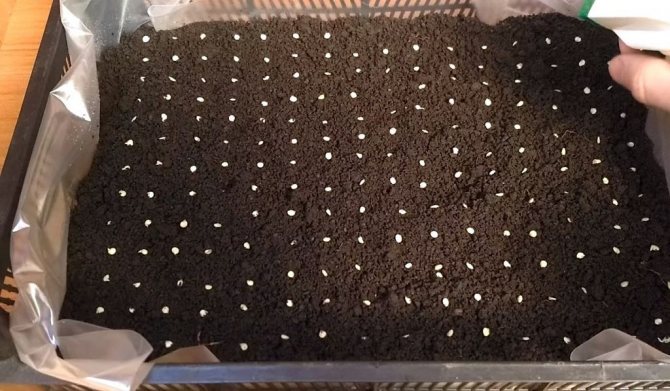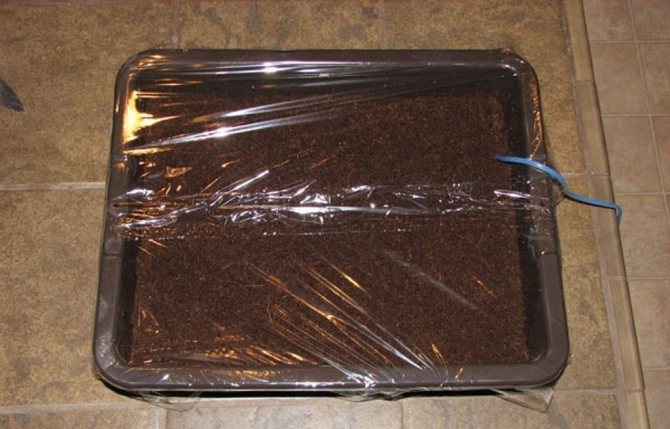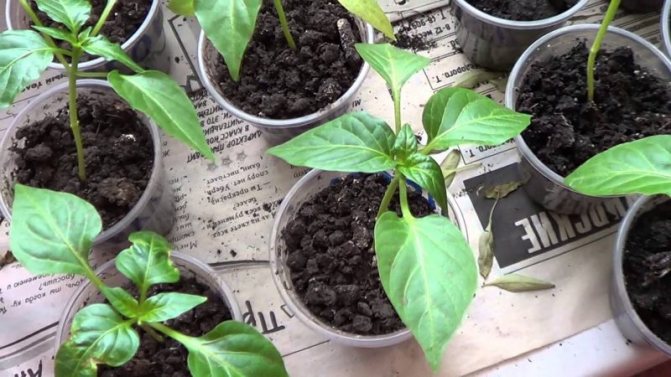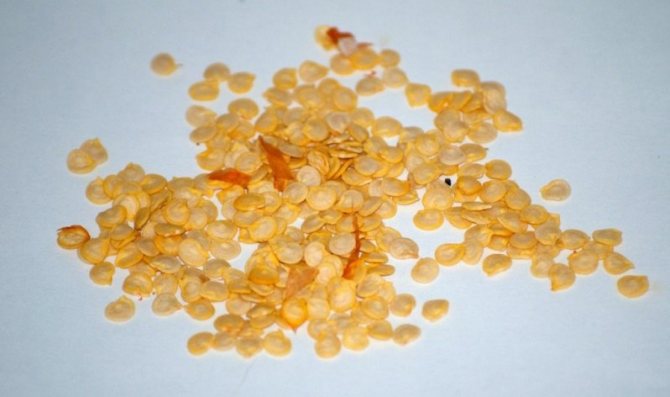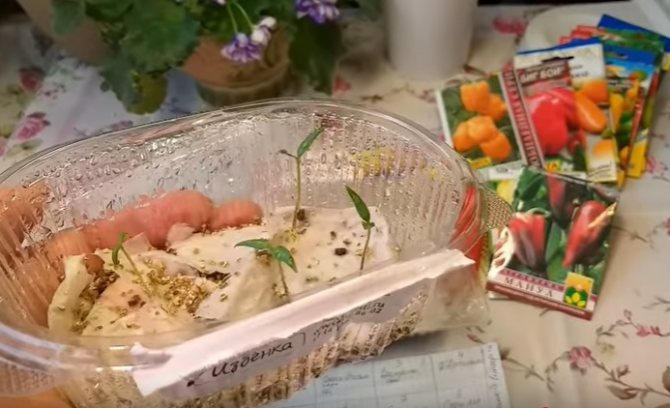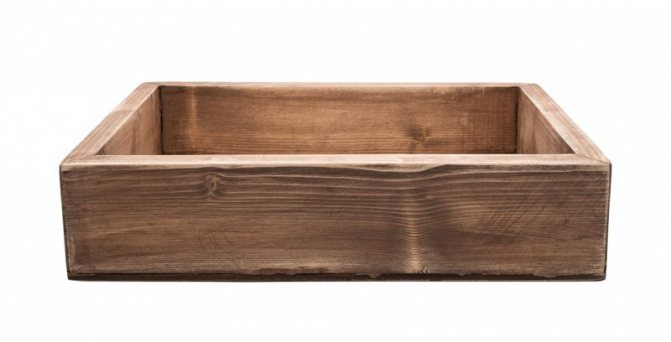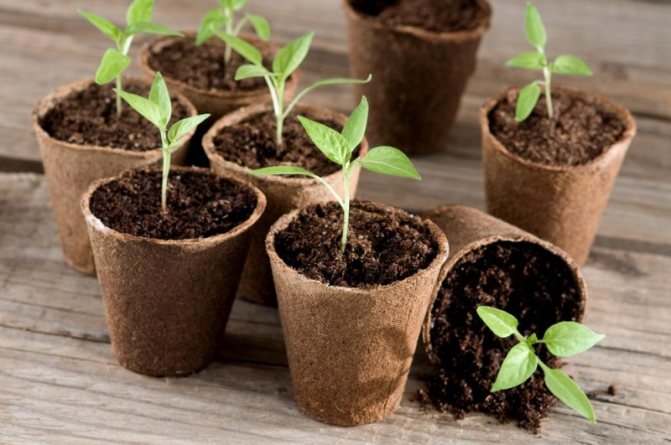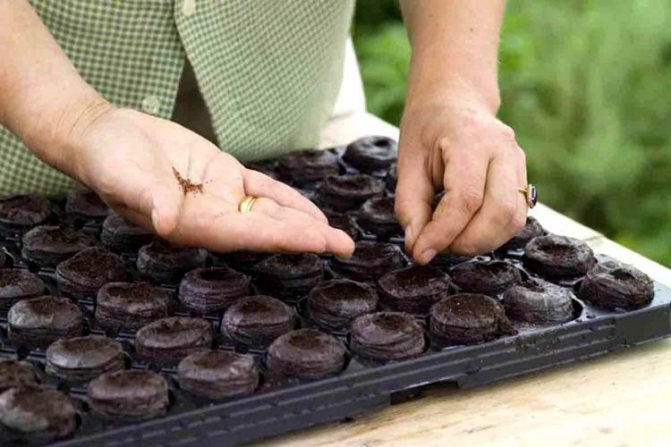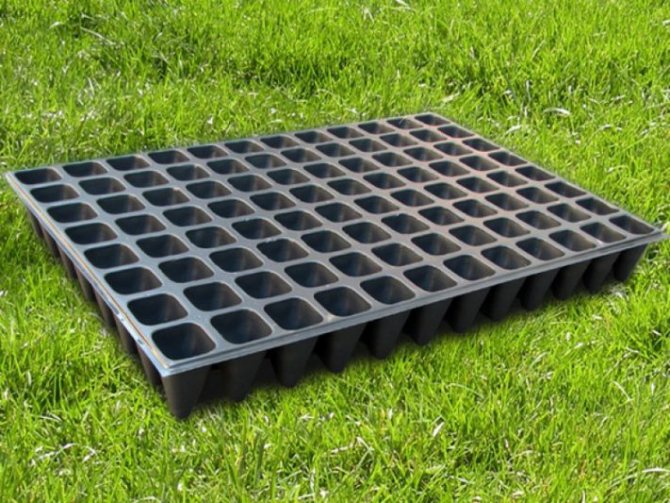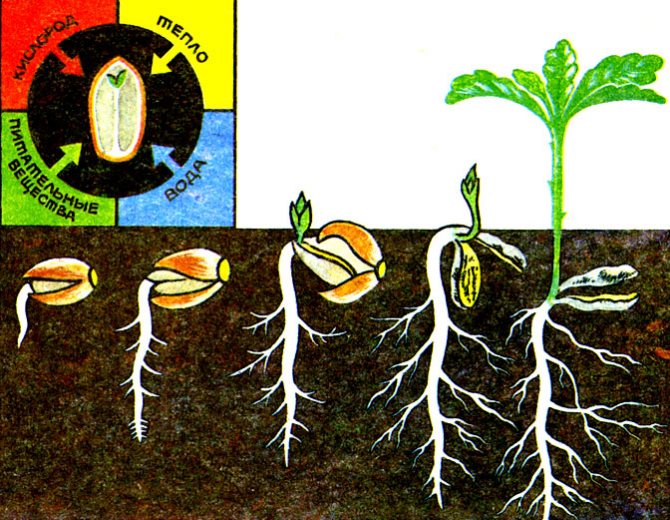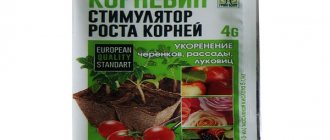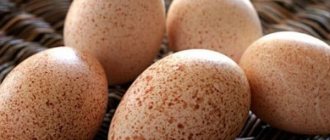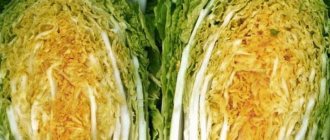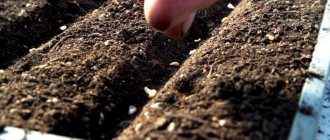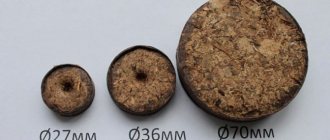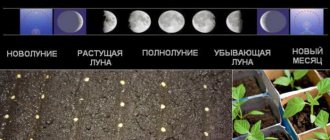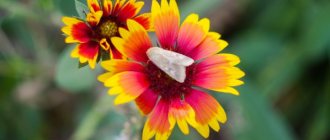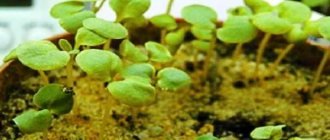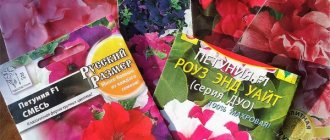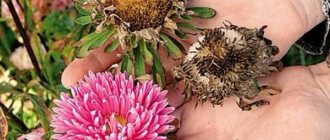Bell peppers and hot peppers are whimsical plants that require proper care at any stage of plant development. Even before planting, you should competently prepare the seeds, since their germination and the health of future sprouts depend on this. It is equally important to accurately prepare the soil for sowing, to observe the planting time. The timing of the appearance of the first seedlings of seedlings depends on many factors - the characteristics of the variety, climatic conditions, the quality of the planting material. To speed up this process, you should follow the embedding algorithm, select and process the planting material. How to speed up the sprouting of sweet pepper seeds, read our article.
Can I take seeds from purchased peppers?
If you see bright, juicy, fleshy thick-walled peppers in the store, novice gardeners want to take seeds from them in order to get the same wonderful harvest.
Such seeds can be taken, properly prepared and sown. They will even sprout and give a harvest, but the fruits will be far from those beautiful peppers that flaunted on the shelves.
A similar situation can happen with seeds from your own garden. If you bought a bag of seeds from which fruitful and tasty peppers grew, but you cannot get the same harvest from your seeds. The fruits grow small, sometimes ugly, not so tasty and fruitful.
This story is just for those who have not yet figured out what is the difference between varieties and hybrids. The store most likely sells the fruits of hybrids - most likely, they were bred for the purpose of long-term storage, easy transportation, keeping keeping quality and presentable appearance.
If you buy a bag of seeds, pay attention to the F1 designation. This means that you have a hybrid of the first generation in your hands, and in the second generation (i.e. when you yourself collect and sow seeds from these fruits) the signs do not repeat.
You can only collect your seeds from varieties. Hybrids do not repeat their properties during seed propagation, and each time you need to purchase seeds from the producer again.
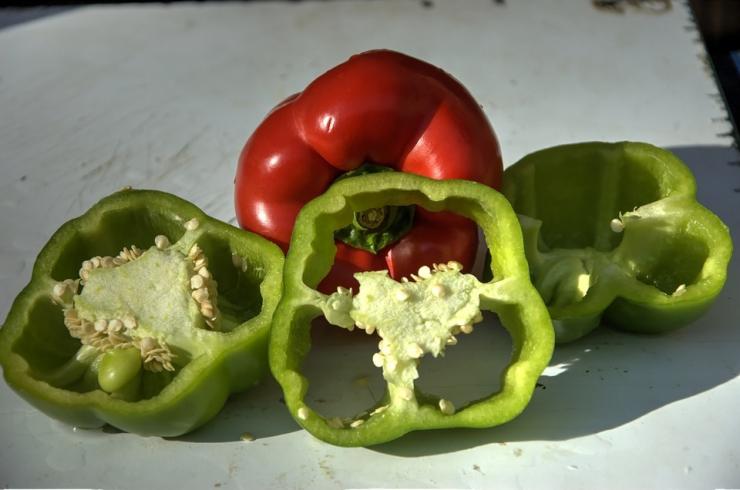
The first shoots have sprung up, what to do next?
After a while, seedlings appear. Now they need create the most optimal conditions... The first is light. If it is not enough, then the plants will begin to stretch, and then completely die.
Attention! Do not place young seedlings directly under the scorching sun.
It is convenient to use artificial lighting for seedlings. Special lamps for flowers are now on sale, but you can also use daylight, choosing the right amount. Incandescent lamps are not suitable for these purposes - they emit little light, but a lot of heat, which can burn delicate leaves.
Daylight lamps are positioned at a height of about 30 cm, daylight hours should last about 18 hours, but not less than 14 hours. To make it more convenient, you can connect special on / off control timers to the luminaire.
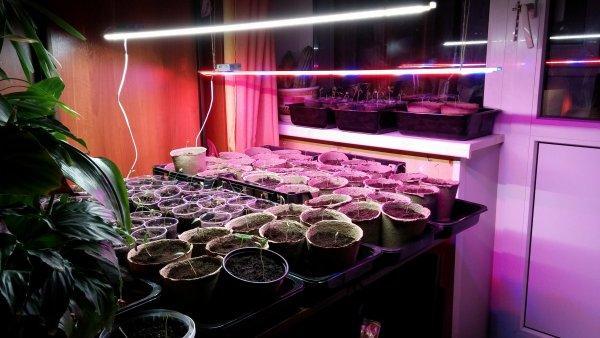

We land on a permanent place
As soon as the pepper seedlings reach 10-15 cm, it must be dropped off at a permanent place... Use large pots or boxes for these purposes: it grows quickly and has an extensive root system.
We carefully take out the sprout. The most convenient and less traumatic for the plant use the transshipment method... Pepper, sprouted in peat tablets, is planted with them in a pot.
Keep in mind that the larger the planting container, the larger the plant will be. As soon as the frost passes, the plant is taken out to the balcony.
If you grow large varieties of bell peppers, then take care of large containers and methods of garter plants.
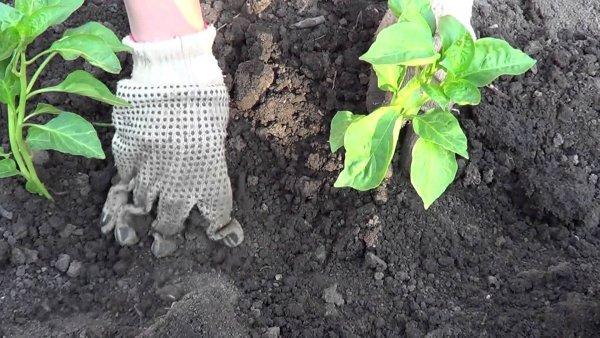

How does packaging affect seed quality?
Packages with seeds are very different: in brightly colored glossy packaging with a visual image of the variety and in simple black and white paper.
Some gardeners do not take seeds in simple bags, believing that these seeds are "homemade", low-quality, unknown companies.
The most important thing to pay attention to is whether there is information on the packaging about the dates of receipt of seeds and their shelf life and storage. Stamps should be clear and well marked. The following should be indicated: number of seeds, batch number, sale date, etc.
Also, a verified manufacturer always indicates his full details and contact information on the seed bag.
How to choose pepper varieties for growing in the Middle Lane?
1. Choose varieties of early maturity: an average of 80 to 100 days from germination to fruiting. These are, for example, such varieties as Nathania, Morozko, California Miracle Golden, Health, Winnie the Pooh, Yolo Miracle, Jupiter, etc. ___________________________________________________
Description and characteristics of early ripening peppers can be found in this article ___________________________________________________
2. As a rule, for open ground varieties are taken undersized, compact.
3. Give preference to modern varieties and hybrids. They have complex disease and pest resistance.
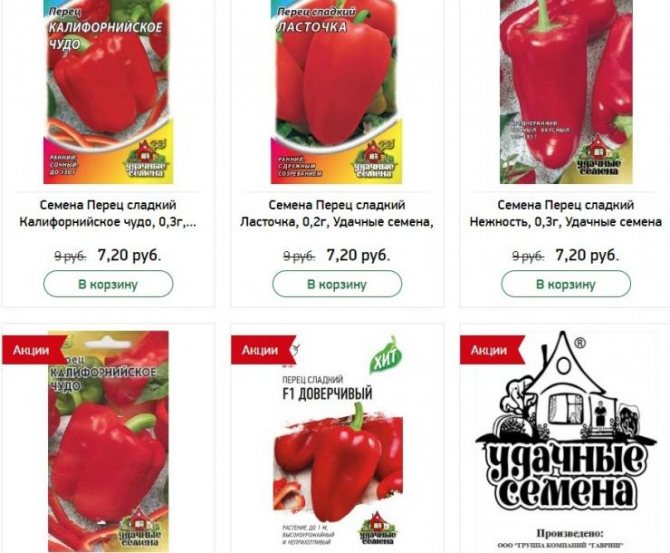

conclusions
- For further planting in a polycarbonate greenhouse, or in open ground, preparatory and pre-sowing procedures significantly accelerate the emergence of seedlings, as well as the sowing quality of pepper seeds.
- Disinfection ensures that peppers are highly resistant to infectious diseases.
- Germination and bubbling significantly accelerates the growth of peppers and the emergence of friendly shoots.
- Soaking in growth stimulants is carried out only after the seeds have passed the rest of the preparation stages.
- Regardless of which germination substrate has been chosen, it is necessary to ensure that paper, cloth, cotton pads or sawdust are constantly wet.
- In the absence of seedlings, you should evaluate the correctness of your actions and hurry up with sowing new seeds.
How to properly soak pepper seeds before sowing?
To accelerate seed germination, they must be pre-soaked. however, many gardeners make typical mistakes. For example, the seeds are placed in a container (plastic cup or saucer), filled with water and left for several days.
In this way, the seeds can only be drowned. To germinate, seeds require air to remain viable, otherwise they will simply suffocate.
You need to germinate seeds correctly in gauze soaked in water. There are holes in the structure of the gauze that allow air to pass through and allow the seeds to breathe. Gauze with seeds is placed on a flat saucer, placed in a plastic bag and removed to a warm place with a temperature of 20-22 ° C to 25 ° C
Spy on the seeds, as soon as the loops appear (in a day or two), they need to be sown.
Features of sprouting hot chili seeds
Fans of savory dishes are interested in how to germinate chili seeds in order to grow them from their seedlings in the future? Basically, sprouting hot pepper seeds almost no different from sprouting a sweet seed, with the exception of a couple of points, namely:
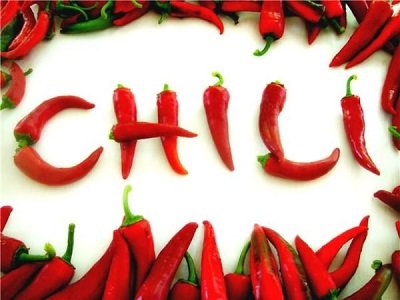

- Landing dates... Hot peppers have a long growing season and are especially sensitive to the length of the day. The best time to plant: January - February.
- Light intensity... Hot peppers need a lot of sun for normal growth, so choose a southern or eastern windowsill.
- Temperature... In winter, the temperature should not exceed 18 degrees, and in spring, 22 degrees will be optimal.
- Water balance... Hot peppers are sensitive to water and should be watered at least once a day. In this case, the water in no case should be cold.
Coconut substrate for pepper seedlings
If you do not harvest your own seedling soil from year to year, which has been tested by time and enviable yields, the question of buying arises.
Instead of store-bought soil (which may be of questionable quality), try sowing peppers in coconut substrate. Its quality is less dependent on the manufacturer, there is less counterfeit and guaranteed absence of pathogens.
Coconut suspension is sold in braces (bricks). It looks very hard, so it needs to be properly soaked before use. They put it in a bucket and fill it with water.
From one briquette, 7 liters of moisture-consuming, loose, light, sterile soil is obtained. No other substances need to be added.
In such a breathable substrate, the roots of young seedlings develop very well, they do not get tangled, which means they are not injured when diving.
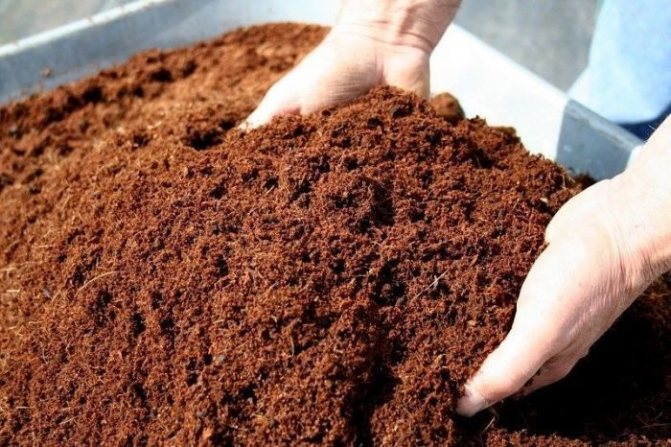

Photo: soaked coconut substrate for growing seedlings
Additional care
Inspect the plant for pests daily. Even at home in plants sometimes diseases appear and pests attack.
If you notice dark spots, yellow, twisted and falling leaves, as well as insects, take action immediately, otherwise the plant can be lost. What to do if seedlings fall?
In what containers is it better to sow pepper?
It is believed that peppers do not like picks, as they can hardly tolerate damage to the roots. But if you are sure that you can plant seedlings from a common school in separate pots, keeping an earthen ball and without damaging the roots, then growing with a transplant will give you its advantages:
- If you are using lighting, common seedlings with crops will allow you to reduce the illuminated area and save energy in the first weeks of seedling growth.
- If you feed the seedlings, you will save on the volume of the nutrient solution.
- At first, you will significantly reduce the time and effort spent on maintaining compact crops.
To grow seedlings in a school with a subsequent pick, I take a container of such a height that the soil layer is 6–8 cm, and the height of the walls above the ground level is at least 3-4 cm.
The fact is that the seedlings will not need a large layer of soil, since they will not have time to cover the entire thickness of the soil with their roots before the pick. And a sufficient height of the walls above the ground level will create a greenhouse effect inside the bowl when you cover it with glass or film, and will leave enough space for seedlings in the first days of growth.
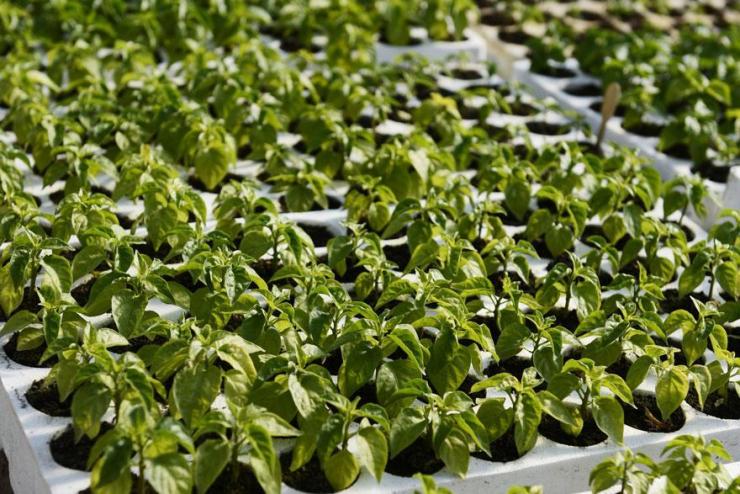

Photo: seedlings of peppers in separate cassettes
Possible mistakes
- Violation of the timing of the procedure. Peppers need to be soaked for no more than a day. The further presence of seeds in a liquid solution has a detrimental effect.
- Processing of pelleted seeds. This seed has already undergone the required processing. By soaking such seeds, you can destroy the layer of active substances with which the outer shell was coated at the plant.
- Incorrect concentration of active ingredient. The proportion of the preparation you use for soaking should be low enough not to "burn" the seeds.
- The seeds are not washed with water after processing. This is an important point, since after the procedure it is necessary to wash off the microparticles of the preparation from the seed coat. So that they don't continue to act.
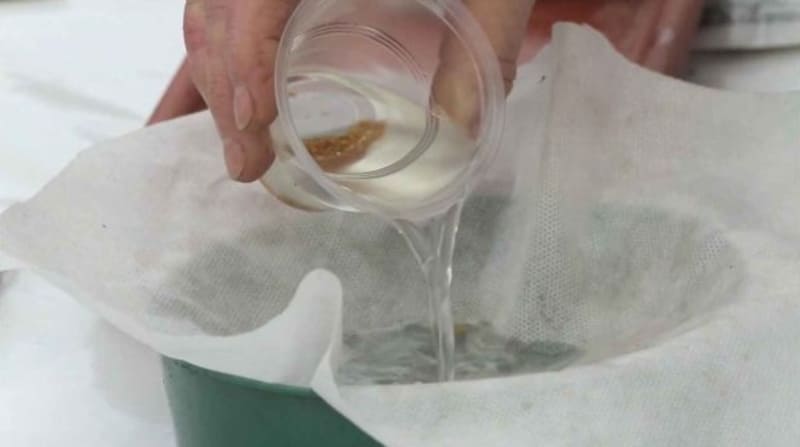

ON A NOTE. Professionals say that planting material of three years and more is not suitable for germination. Use seeds from last year or at least the year before last harvest.
How to sow peppers in a common school?
- At the bottom of the container, I make drainage holes and fill in the soil in such an amount that, after light compaction, its layer is 5–6 cm.
- I spill the soil with water, with the addition of Fitosporin-M, avoiding waterlogging.
- On the moistened soil, I spread the seeds in rows according to a scheme of about 2x2 cm and sprinkle them on top with a layer of soil so that after light compaction it is no more than 1-1.5 cm.
- Moisten the top layer.
Sowing peppers for seedlings can be done with sprouted (hatched) or dry seeds.
In the first case, it is important to position the seed in the soil so that the root is facing downward, and to be extremely careful when filling the seed and compacting the top layer of soil so as not to damage the root. The soil layer above them may be less - 0.5-1 cm.
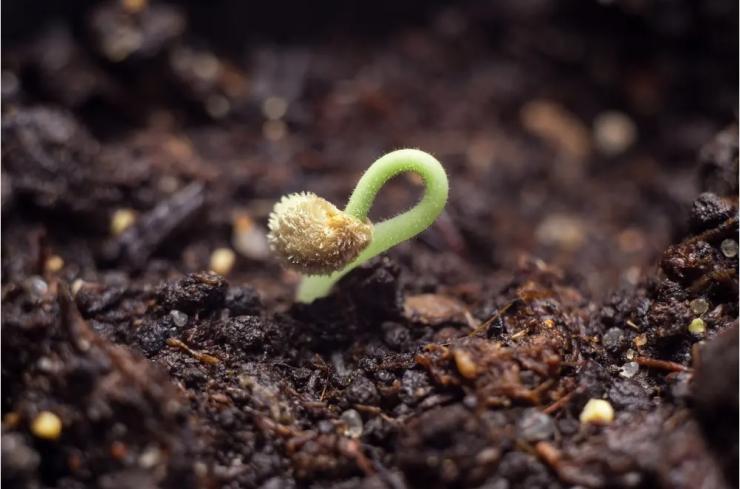

Photo: sprouts of pepper
What temperature is needed for pepper to germinate?
Immediately after sowing, I cover the school with glass or transparent film and put it in a warm place, ensuring the temperature is 25–32 ° С. The timing of seedling germination depends on the temperature:
- 28–30 ° С - seedlings of most varieties will rise in 4–7 days;
- 24-25 ° С - it will take 14-15 days to wait for germination
- 20-22 ° С - the seeds will sprout in 20-22 days and, perhaps, not all;
- below 20 ° C - seedlings can not be expected at all.
| TIP Glass or film must be removed twice a day for ventilation and accumulated condensation removed. |

